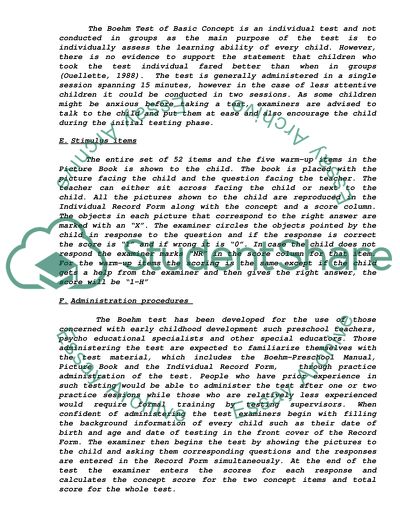Cite this document
(Boehm Test of Basic Concepts Preschool Version Essay Example | Topics and Well Written Essays - 2000 words, n.d.)
Boehm Test of Basic Concepts Preschool Version Essay Example | Topics and Well Written Essays - 2000 words. https://studentshare.org/health-sciences-medicine/1734278-critique-of-the-boehm-test-of-basic-concepts
Boehm Test of Basic Concepts Preschool Version Essay Example | Topics and Well Written Essays - 2000 words. https://studentshare.org/health-sciences-medicine/1734278-critique-of-the-boehm-test-of-basic-concepts
(Boehm Test of Basic Concepts Preschool Version Essay Example | Topics and Well Written Essays - 2000 Words)
Boehm Test of Basic Concepts Preschool Version Essay Example | Topics and Well Written Essays - 2000 Words. https://studentshare.org/health-sciences-medicine/1734278-critique-of-the-boehm-test-of-basic-concepts.
Boehm Test of Basic Concepts Preschool Version Essay Example | Topics and Well Written Essays - 2000 Words. https://studentshare.org/health-sciences-medicine/1734278-critique-of-the-boehm-test-of-basic-concepts.
“Boehm Test of Basic Concepts Preschool Version Essay Example | Topics and Well Written Essays - 2000 Words”. https://studentshare.org/health-sciences-medicine/1734278-critique-of-the-boehm-test-of-basic-concepts.


